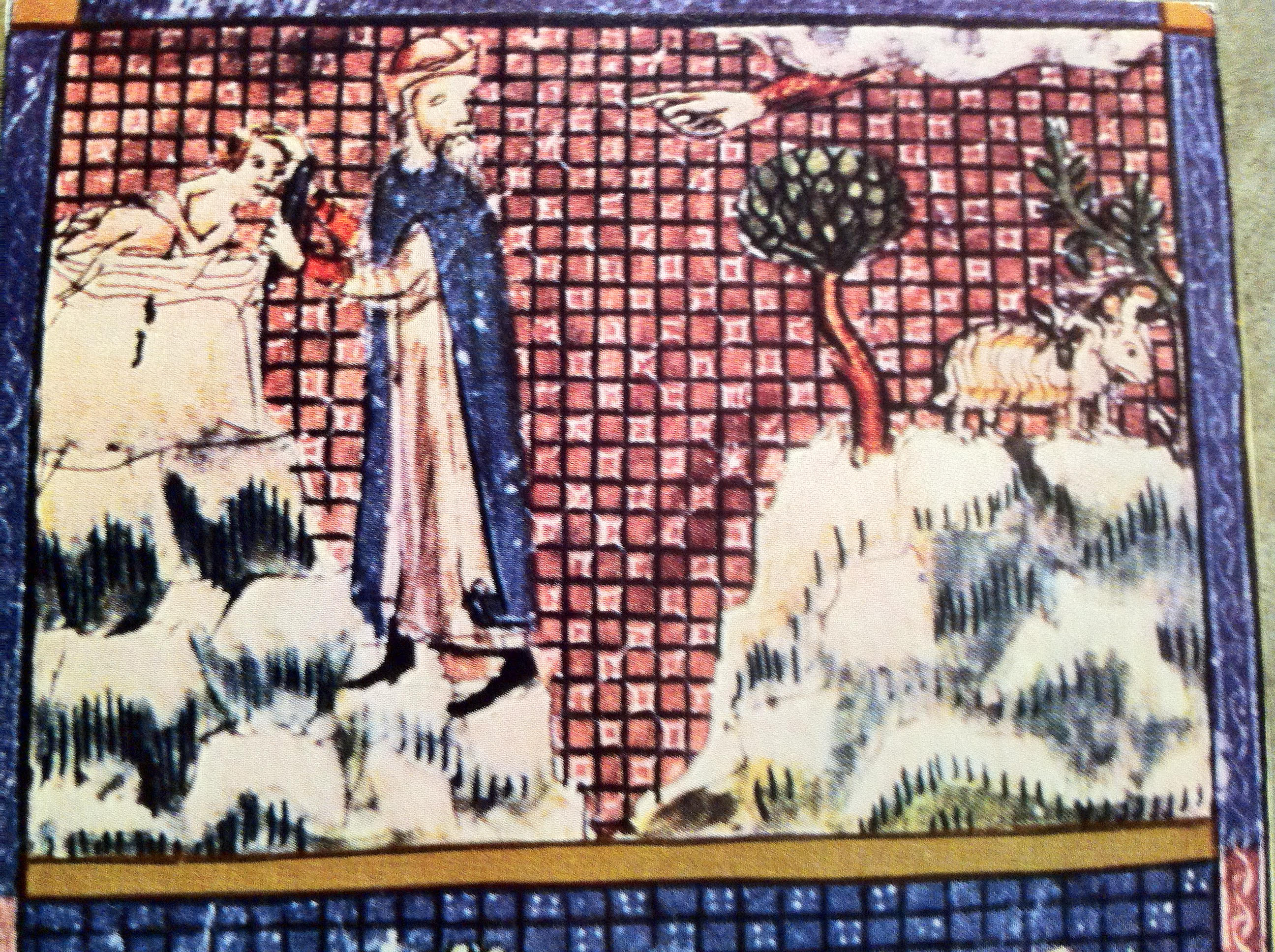This icon of the “Hospitality of Abraham” depicts Abraham and Sarah serving the three angels who came to visit them at the Oaks of Mamre. They promised that Sarah would have a son in a year and then two of the angels went on to save Abraham’s nephew Lot from the destruction of Sodom and Gomorrah.
Last week. the New York City public schools had a day off to mark the celebration of the Muslin holiday of Eid al-Adha which celebrates the sacrifice of Isaac and marks the conclusion of the pilgrimage to Mecca. As part of the celebration, each family is expected to give away one-third of their festive meal to the poor and needy. In Jewish and Christian retellings of the story, Isaac is bound for sacrifice on a barren hill top that later becomes either the Holy of Holies in the Temple or the summit of Calvary/Golgotha. Although the original story does not tell us how old Isaac was when Abraham took him to sacrifice, later interpretations of the story say that Isaac is a young man in his early 30s who could easily have overcome his father Abraham; not only does Isaac willingly go with his father Abraham but he carries the wood on which he knows that his father means to burn his body after slaying him. In these versions of the story, Isaac’s obedience to the divine command is just as critical to the outcome as Abraham’s obedience.
In the prayers for a first marriage in the Orthodox Church, many saintly couples of the Old Testament are asked to pray for and celebrate with the newlyweds. These couples from the Old Testament are held up as examples of marital life to be emulated. But recently, when Sister Vassa Larin, host of the popular Coffee with Sister Vassa podcasts, visited our parish, one woman asked what saints a couple might turn to if they were experiencing marital difficulties or considering divorce. It seems to me that at least one of these saintly Old Testament couples invoked in the wedding service are also appropriate saints to see as patrons of marital difficulties: Abraham and Sarah.
The life of Abraham and Sarah is recounted in Genesis 11-25. We read that Abraham led his extended family out from their traditional homeland and across the Middle East to the “Promised Land” which has come to be identified with Israel. No record of how Sarah felt about packing up and leaving behind everything she had ever known. Further along in the text, we find that Abraham acted as a pimp for his wife Sarah while they were in Egypt (no record of how Sarah felt about THIS — and according to the story, it happened more than once! see Genesis 12 and 20) and he later tried to sacrifice/kill the son he had with Sarah — again, no record of how she felt about this attempt on her son’s life although we can imagine how any mother might feel if her husband tried to kill her only child. On the other hand, Sarah did attempt to kill her handmaiden Hagar after she had urged Abraham to make her his mistress.
All together, it seems that Abraham and Sarah had a rocky relationship at best and that depictions of them as a happy, older couple doting on their infant son Isaac oversimplify and cheapen the narrative as a whole. Their life together is much more like a Peyton Place than it is a picnic on the grass. All of which goes to show that the Abraham-and-Sarah saga, so central to the Old Testament, touches on just about every variety of human experience.
The Sarajevo Haggadah, one of the oldest Sephardic Haggadahs in the world, comes from Barcelona around 1350 and contains many beautiful illuminations to illustrate the text. One of these shows the Sacrifice of Isaac (commonly called the “Binding of Isaac”):

